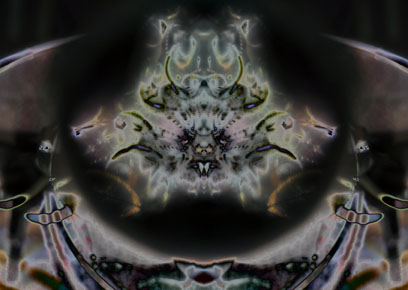Memory of an Elephant

I was somewhat perplexed by the allusion of the title for this image to the commonplace that pachyderms never forget, until I realized the allusion was not to this unsupportable generality but to the elephantine phenomenology which, were such a generality supportable, would have to be elicited to support it. A speculation, that is to say, on the form of the elephantine consciousness per se. The evidence for this is initially negative: the absence of any allusion at all to the elephantine proboscis, to its ivories, to its magisterially lumbering gait or legendary burial grounds. It is certain therefore that we have entered upon something uncommonly under occultation, secreted beneath the original commonplace.
It thus would seem that the elephant teaches an essence of the memorial, not because it possesses some preternatural capacity for mere recollection, but because the elephant itself is of the memory. As in the verses:
Memory’s red city is a prop.
Though you are rich and old;
though you keep excellent white dogs;
you are also
of the memory.
The color of the elephant’s memory seizes the human soul once its atmosphere suffuses inspection.
Unlike the human infant that comes equipped with the capacity to recognize its mother’s face as a face before it has any knowledge of its own; the image of what would seem at first glance to occupy the site of an elephantine countenance is clearly an internal model of something else—some internal space special to the elephant, say, over which spatial configurations appear in special variants—the a priori of the elephant world distributing its phenomena, thusly.
Against a startling mantle. A murky brown black collar-like thing, so that the bat moth bull and Chinese madame thing—the thing with narrow blue eyes—the thing with plumes and sequins and interior compacts with other beastial things—lays in against an ominous absorbing emitting irrefutable ground. What all our crimes denounce sustains this memory and its variants.